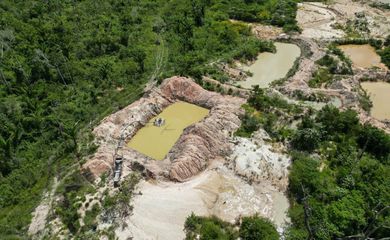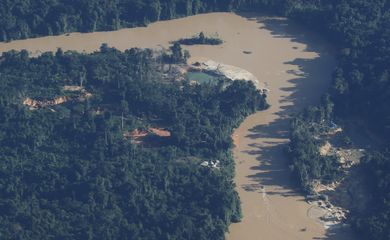Greenpeace shows new mining areas on indigenous lands

Greenpeace Brasil has identified new mining sites in the Kayapó and Yanomami indigenous territories, which are already among the most affected by the activity. The sites are far away from other older, long-established mining spots.

In a note sent exclusively to Agência Brasil, the organization said that, from July to September this year, mining caused the deforestation of 505 hectares in the Kayapó, Yanomami, Munduruku, and Sararé territories.
The destroyed perimeter—the size of 707 soccer fields—was measured using images from the Planet Lab and Sentinel-2 satellites.
Looking at the changes in the first three indigenous lands, the area deforested in the quarter analyzed was up 44.48 percent from the same period in 2023.
The Kayapó territory lost the most forest, with a 35 percent expansion in the deforested area during the period surveyed. Altogether, 315 new hectares were deforested.
According to Greenpeace, the Kayapó indigenous territory reached three other records in the quarter: the highest concentration of mining areas (15,982 hectares), the highest number of new areas cleared for mining activities, and the highest concentration of forest fires in 2024.
Regarding the Yanomami indigenous land, the mining area totals 4,123 hectares, of which 50 hectares are more recent, recorded in the quarter evaluated. In this case, the increase (32%) was slightly smaller than that of the Kayapó.
“Satellite images also reveal that there has been an expansion of the new mining frontier in the south of Yanomami territory, which Greenpeace reported early in 2024. New frontiers have also been identified in the Pico da Neblina National Park, in the south of the region,” Greenpeace went on to state.
The organization also found a 34.7 percent surge in the area devastated by mining on Munduruku soil. The total was 32.51 hectares in the last quarter. The territory also had three percent of its area affected by fires and drought, which aggravated the food and water crises.
In the Sararé indigenous territory, deforestation by miners covered an area of 106.98 hectares in August and September this year. The total mining area is 1,863.78 hectares, according to Greenpeace, which highlights the escalation of violence in the territory.





